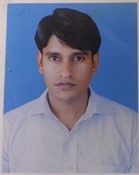Program Information
Impact of Reconstruction Field of View On Radiomics Features in Computed Tomography (CT) Using a Texture Phantom
M Shafiq ul Hassan1,2*, G Zhang1,2 , K Latifi1 , J Oliver1,2 , D Hunt1 , R Guzman1 , Y Balagurunathan1 , D Mackin3 , L Court3 , R Gillies1 , E Moros1,2* , (1) H Lee Moffitt Cancer Center and Research Institute, Tampa, FL, (2)Department of Physics, University of South Florida,(3) UT MD Anderson Cancer Center, Houston, TX,
Presentations
MO-DE-207B-4 (Monday, August 1, 2016) 1:45 PM - 3:45 PM Room: 207B
Purpose: To investigate the impact of reconstruction Field of View on Radiomics features in computed tomography (CT) using a texture phantom.
Methods: A rectangular Credence Cartridge Radiomics (CCR) phantom, composed of 10 different cartridges, was scanned on four different CT scanners from two manufacturers. A pre-defined scanning protocol was adopted for consistency. The slice thickness and reconstruction interval of 1.5 mm was used on all scanners. The reconstruction FOV was varied to result a voxel size ranging from 0.38 to 0.98 mm. A spherical region of interest (ROI) was contoured on the shredded rubber cartridge from CCR phantom CT scans. Ninety three Radiomics features were extracted from ROI using an in-house program. These include 10 shape, 22 intensity, 26 GLCM, 11 GLZSM, 11 RLM, 5 NGTDM and 8 fractal dimensional features. To evaluate the Interscanner variability across three scanners, a coefficient of variation (COV) was calculated for each feature group. Each group was further classified according to the COV by calculating the percentage of features in each of the following categories: COV≤ 5%, between 5 and 10% and ≥ 10%.
Results: Shape features were the most robust, as expected, because of the spherical contouring of ROI. Intensity features were the second most robust with 54.5 to 64% of features with COV < 5%. GLCM features ranged from 31 to 35% for the same category. RLM features were sensitive to specific scanner and 5% variability was 9 to 54%. Almost all GLZM and NGTDM features showed COV ≥10% among the scanners. The dependence of fractal dimensions features on FOV was not consistent across different scanners.
Conclusion: We concluded that reconstruction FOV greatly influence Radiomics features. The GLZSM and NGTDM are highly sensitive to FOV.
Funding Support, Disclosures, and Conflict of Interest: funded in part by Grant NIH/NCI R01CA190105-01
Contact Email:

